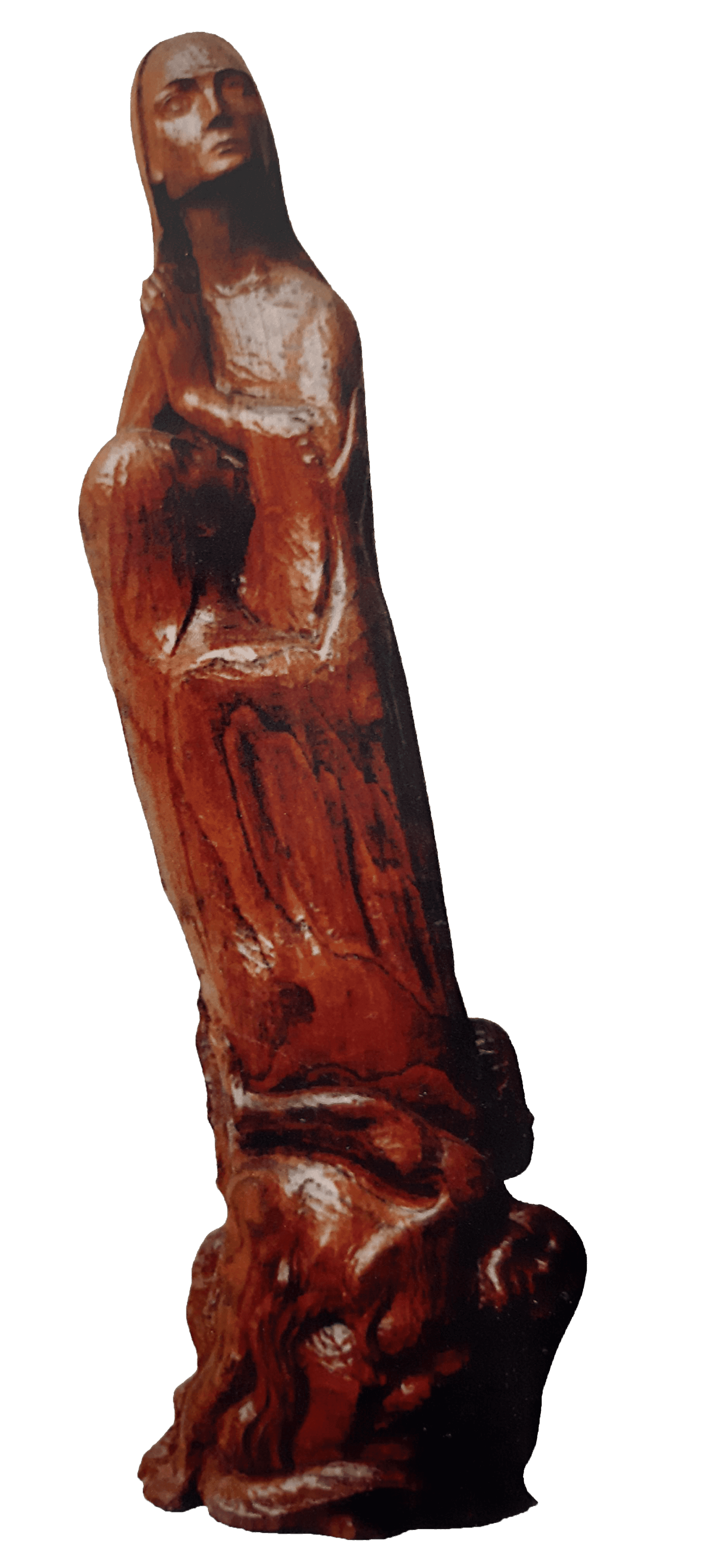Samuel Bugeja's Sculptures as Seen by
EV Borg
Page 1 | Page 2 |


EV Borg is the most respected and highly acclaimed Art Curator and Critic and Lecturer at the University of Malta. EV Borg has on various occasions and within publications shown his high respect to Samuel Bugeja and indeed regards him as the best Maltese wood sculptor of the second part of the 20th century. The writings of EV Borg reflect the deep respect he had for Samuel Bugeja’s creations in wood. Professionally researched, the liberally taken extracts below convey a notable art critic’s understanding of Samuel Bugeja.
• EV Borg. Publication Kultura 21 Number 3 in June 2004. Titled Poetry in Wood. ‘His sculptural expression is direct, simple and primitive. It overflows with profound sentiments, lyrical and poetic. His work emanates tenderness, tranquility and serenity that melt into perfect harmony that emphasises the romantic fervor of the man’.
‘Samuel is a lover of life, he is bewildered with its precious power and he breathes this energy and force into his expression. His work pulsates, throbs with life. Strong willed, tenacious and determined he consistently persevered in creating wonderful works of art’.

‘Without any shadow of doubt, Samuel Bugeja was the leading sculptor in the second half of the 20th century (1950 – 2000) and a professional art restorer with a rich technical experience. Samuel was greatly respected, widely appreciated, deeply cherished and highly recommended especially by his world famous Italian mentor Prof Cesare Brandi’.
• EV Borg. In-Nazzjon. The Romantic Ideal of Samuel Bugeja. 12th February 2004, 20th February 2004 and 12th March 2004. ‘The year 1969 witnessed prolific, rich work and fruitful work of the Artist Samuel Bugeja. ‘Maternity’ is a successful art work that leaves one breathless. Maybe exemplary – characteristic. The concept is so vital and strong that it stretched the artist’s technical prowess to a surprisingly high level. The infant, embracing the mother, slips the hold like an eel and pinches her face with the same tenderness that she balances his head. The work has harmonious musical rhythm, diagonal dynamics and profoundly relieved. It inspires one to admit ‘What is stronger than the love of a mother’?
• ‘The Divine Comedy’ (1966) in walnut shows spirits aspiring to reach their purity through the cleansing heat but inspired by the ecstatic dominant figure. Angled with agility it conveys uplift and architectural resonance. This is Samuel Bugeja’s masterpiece. The work was meant for a monument to the Italian poet Dante (1263 to 1321)*. However, eventually it could be the sculptor’s monument being the landmark of his career’. ‘Samuel Bugeja loved classic art, antiques, Renaissance paintings and History of Art. He was a discerning collector of art and spent his life carving in wood, modelling in clay, casting in bronze, teaching Art and Sculpture and Restoring’.
Note * - Samuel Bugeja had decided not to enter this masterpiece in the competition but to exhibit the work of art. Later, then the Jury adjudicating the competition, stated their regret in not having Samuel Bugeja’s sculpture in the competition.
• A polyptych restored to its former splendour by Samuel Bugeja is now dominating one of the halls in the Cathedral Museum, Mdina.